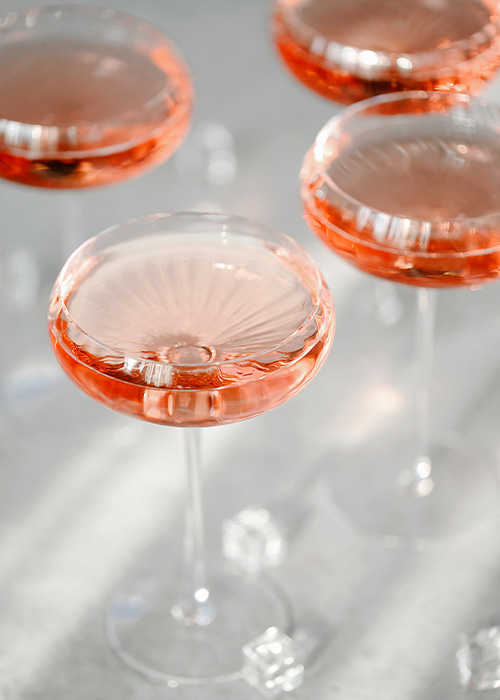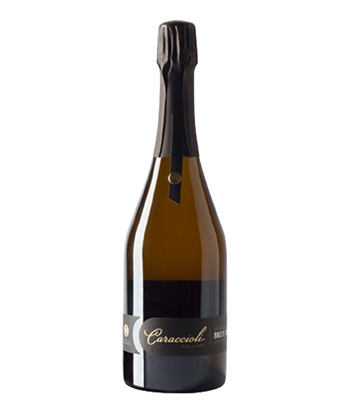2020 was Champagne’s worst year since World War II, with sales dropping during the pandemic (when excuses to celebrate were at an all-time low). In 2021, Champagne was hit hard again — this time due to substantial rain, severe frost, and mildew. This unfortunate trio of weather patterns eventually caused problems leading up to harvest, with low yields forcing many Champagne houses to release their reserve bottlings or in some cases, not produce any Champagne at all from their 2021 harvests. Although Champagne sales have rebounded exponentially in 2022, climate change is still a major factor in the region — which means concerns of spring frost and hail similar to 2021 are top of mind for producers of the French sparkling wine.
According to Business Wire, sparkling wine sales will continue to increase in the coming years, and in cooler regions like England, climate change has actually helped sparkling wine-producing vineyards as temperatures steadily climb to those similar to Champagne’s 60 years ago. Could this be the time for unheralded regions to move into Champagne’s spotlight?

Don’t miss a drop!
Get the latest in beer, wine, and cocktail culture sent straight to your inbox.
Many consumers see all wine with bubbles as synonymous with Champagne. As a wine professional, I find that the most important thing when educating customers about Champagne’s distinction from other sparkling wines is to explore why sparkling wines other than Champagne shouldn’t be an afterthought and introduce individuals to categories like Cava, Prosecco, and American sparkling wines through the lens of food.
Pre-pandemic, Champagne was largely considered a wine consumed only on special occasions and has therefore been pigeonholed to a few celebratory occasions a year. As the pandemic loomed, Champagne was running low during the holidays of 2021 — a shortage that allowed other sparkling wines to gain traction. The key is keeping the momentum going, encouraging consumers to think outside the box when it comes to sparkling wine and reminding folks that one wine doesn’t fit all tastes.
Prosecco has been popular in the U.S. for years, and with the recent addition of Prosecco rosés to the market, the category as a whole has seen a boom. Over 80 percent of Prosecco DOC rosé is exported to the U.S, Canada, and the U.K. As rosé wine sales continue to grow during the summer, this category is slated to continue its market growth as the world is able to gather again.

Cava, the sparkling wine from Spain, has worked hard to implement new regulations for its wines. In 2020, the Cava Regulatory Council approved new guidelines and zoning for Cava DO and in 2021 created a Cava traceability system to track the wine every step of the way from grape harvest, production, and disgorgement in an effort to ensure adherence to the traditional method, minimum aging requirements, and sugar levels. These new rules in Cava will assist in producing better-quality sparkling wine.
Meanwhile, American sparkling wine continues to be innovative without the strict rules and regulations placed on its European counterparts. Domestic sparkling wine continues to maintain traction as pandemic restrictions loosen and wine lovers venture to local wineries. California has been a leader in sparkling wine for years, boasting popular brands such as Domaine Carneros, Schramsberg, Gloria Ferrer, and Roederer Estate. In 2021, Caraccioli Cellars Brut Rosé 2015 won best U.S. sparkling wine at the Champagne and Sparkling Wine World Championships. These championships judge Champagne and sparkling wines from around the world and showcase the breadth and range of sparkling wines, including winners from Hungary, Spain, Canada, and other countries around the globe — proof that regions outside of Champagne are producing award-worthy bubblies.
For sparkling wine to continue to gain momentum, it should position itself as an everyday beverage for both consumers and beverage professionals. It should be on every glass list as a wine to pair with any course of a meal. If Champagne is the wine of special occasions and events, other sparkling wines should be the bottles one can open just because. Instead of being in competition with Champagne, they should set themselves apart as wines for life’s everyday pleasures. After the past few years, this is something we all can raise a glass to.
This story is a part of VP Pro, our free content platform and newsletter for the drinks industry, covering wine, beer, and liquor — and beyond. Sign up for VP Pro now!


